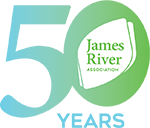If you believe that you may have witnessed a ferret slinking about riverbank rocks and crags, then chances are strong that you have in fact encountered its weaselly cousin, the American mink (Neovison vison). Webster’s Dictionary provides a less than flattering definition of “weasel”, a member the family Mustellidae which includes the mink, otter, badger, marten, ferret, stoat and wolverine. I typically stumble upon minks hunting, eating and swimming in small groups during the late spring to early fall after the young (“kits or cubs”) have taken to swimming close to their mothers. This caused me to inquire: what does one call “a group of minks?”. One cheeky resource suggested that a group of minks is called “a coat”. (For the record, a group of minks is called a “company”.) No matter how you cut it, this busy critter has, in association with its other unlucky weasel cousins, received a bum rap in cultures around the globe.
In truth, the American mink is a native, carnivorous, semi-aquatic mammal that often feeds on rodents, fish, crustaceans, frogs, and birds and may be found throughout the James River watershed. I most frequently observe minks resting near rocks while chomping on fish and crawdads. Its elongated, agile body lends the mink the ability to swim with minimal resistance and to quickly gain entry in dens of its prey. Minks can swim, gallop and climb trees quite well, and may choose to den in a variety of habitats both natural and man-made. Mink are nocturnal and will remain active throughout the year. Like many of its relatives, mink can release a stinky odor if threatened, and are said to purr like a cat when happy. Though some superstitions claim that running across a weasel is an omen, I appreciate these cute, furry inhabitants and their special role in the James. Do yourself a favor and don’t weasel out of the opportunity to enjoy these creatures in their natural element.
Check out this video of playful mink bounding about the rocks of James River Park System.

